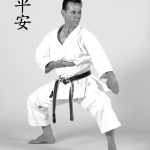
Chinto (meaning approximately “fighter to the east”) is an advanced kata practiced in Shitoryu Karate. It is named after a Chinese sailor whose ship crashed on the Okinawan coast. It is known that the kata Chinto was well-known to the early Tomari-te and Shuri-te schools of Karate. The kata is very dynamic, … Continue reading























